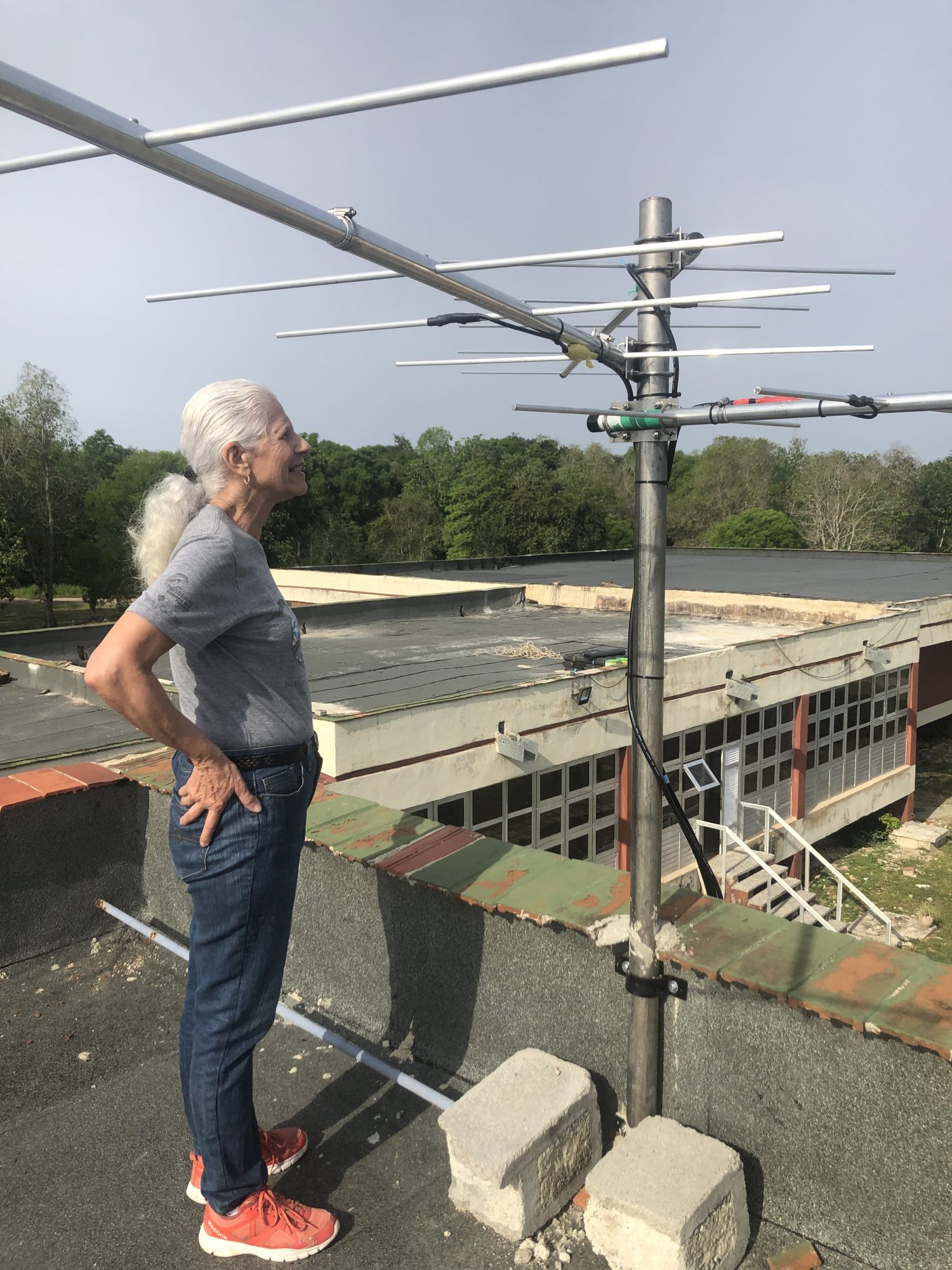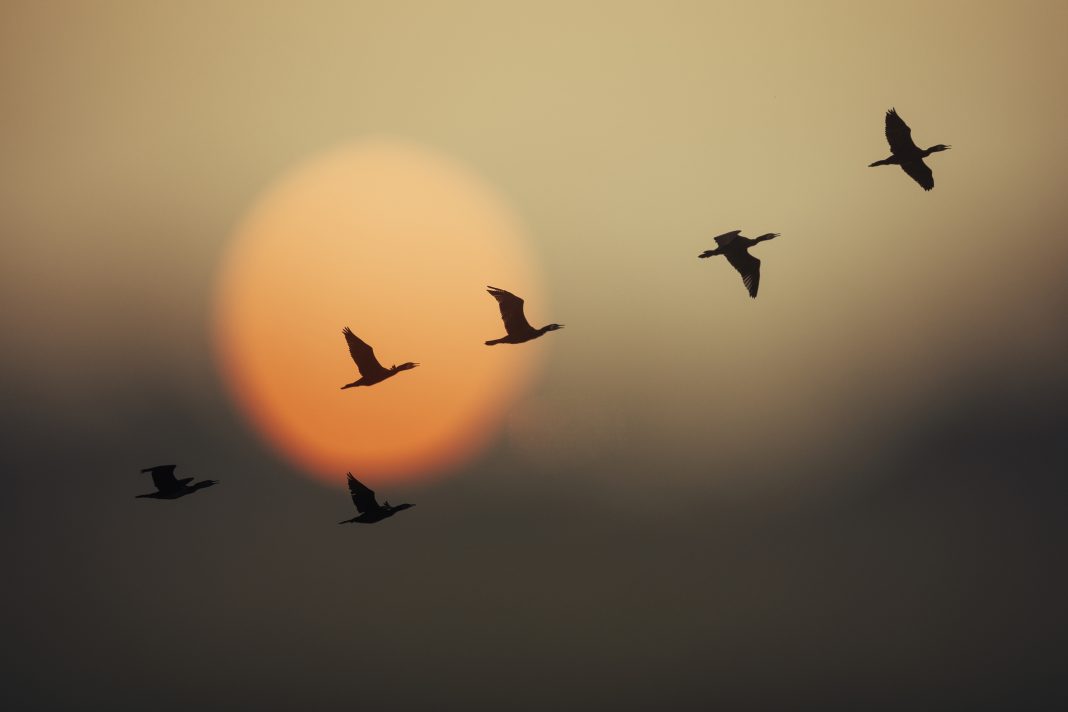Keith Hobson, Professor and Research Scientist at Environment and Climate Change Canada and Western University, discusses updates in the expansion of tracking migratory birds in Central and South America, and the Caribbean
The conservation of migratory birds requires basic knowledge of connectivity between population-specific breeding, wintering, and stopover sites. This recognition has encouraged several government and NGO initiatives since many migratory species cross international borders during their annual travels. While the task is immensely difficult, an array of new tools is now available to track even small birds (~10g) using both intrinsic (e.g. stable isotope or genetic markers) and extrinsic (e.g. attached electronic devices) methods.
Previously, I discussed the advantages of the intrinsic approach of using stable isotope measurements in bird feathers as a tracking tool. However, our lab has also been active in pursuing the use of extrinsic markers, especially at sites in northern Latin America where many North American migrant birds winter. That effort has used an international tracking system known as MOTUS.
The MOTUS tracking system
The MOTUS Wildlife Tracking System is an international collaborative research network using coordinated automated radio telemetry. The program was initiated by Birds Canada with many researchers and organisations working together. It depends upon the distribution of receiving towers that can detect birds and other wildlife via unique VHF transmitters attached to individuals.
Transmitters weighing approximately 0.4g for small birds are now available that can last for several months and are detectable within about 10-15km of a tower. In eastern North America, there is an impressive density of towers that are already indicating the power of this approach. However, tower density in Central America, the Caribbean, and northern South America is still low. As such, more towers need to be deployed in these regions and more tags deployed there to use the higher density of towers experienced as birds return to their North American stopover and breeding grounds.

first MOTUS tower (Hobson photo)
Cuba locations
Cuba is used by many species of Neotropical migrant land birds, either as a stopover site en route to more southern locations or as a wintering site. Cuba’s location is strategic as a migratory stopover site or destination and still maintains impressive amounts of viable habitat. However, to date, relatively little is known about avian migratory connectivity involving this region. To this end, our lab has been working with Cuban colleagues to assess connectivity via stable isotope methods and, most recently, by deploying MOTUS VHF tags on several species. We have also erected Cuba’s first MOTUS recording tower just south of Havana.
Cuba’s National Botanical Garden is associated with the University of Havana and consists of nearly 550 hectares of developed landscapes located ~25km south of the capital city of Havana. The Garden is internationally recognised as a true botanical treasure and consists of approximately 3,000 plant species and the largest collection of trees in Cuba.
In addition to its immense scientific importance, the region is now a de facto sanctuary for large numbers of birds and other wildlife. Recently, three dedicated scientists, Martin Acosta, Lourdes Mugica and Karen Aguilar published a state-of-the-art field guide to the birds of the Garden Aves del Jardin Botanica Nacional de Cuba. That work reports 128 species of birds of which 70 species are migratory.
The site is a perfect location to study birds and has been the focus of scientific work by Dr Mugica and Dr Acosta. The site is also logistically feasible for a MOTUS tower due to its proximity to the University of Havana and its existing critical infrastructure. That constellation of factors and the ongoing collaborations of this group with our lab led us to deploy tracking tags there since 2022 and erect a MOTUS tower at the Garden in April of 2023.
Looking forwards
Understandably, erecting a MOTUS tower anywhere with its associated antennas for receiving VHF signals involves numerous permits and procedures both for importing the materials and for site placement. In Cuba, these procedures were particularly challenging since there was really no precedent.
It was the steadfast and tenacious efforts of Dr Lourdes Mugica, who handled not only all of the permitting requirements, but also all of the ground-based logistics for work at the National Botanical Garden that eventually won the day! Lourdes has spent a career in Cuba researching birds and basically getting things done, and it goes without saying that she deserves full credit for this and other critical work. We registered this MOTUS tower as “Lourdes 1” as a small gesture of recognition!
We hope this is the first of many MOTUS towers to be installed in Cuba, and we are already planning a second tower at the all-important migratory site on the Guanahacabibes Peninsula in northwestern Cuba. To date, Daniela Ventura, a graduate student at the University of Havana, has overseen the Motus tower data and tagging program at the National Botanical Garden in addition to her ongoing mistnetting efforts. Daniela deployed 29 tags in the winter of 2022 and received 16 detections for 5 species in North America.
In 2023, she deployed nine tags and has already received detections of two species. The tower at the Botanical Gardens has also recently detected an exciting “foreign” detection of a Swainson’s thrush tagged in British Columbia, Canada. Together, entirely new information has been obtained thus far for eight species.
This communication would not be complete without due acknowledgement of the brave avian conservationists in Cuba who continue to function despite the immense hardships brought about by the increased embargo enforced by the US government. Basic needs and logistics for everyone in Cuba have been made all the more difficult by such punitive measures that are clearly undermining much-needed international conservation efforts.

This work is licensed under Creative Commons Attribution-NonCommercial-NoDerivatives 4.0 International.


